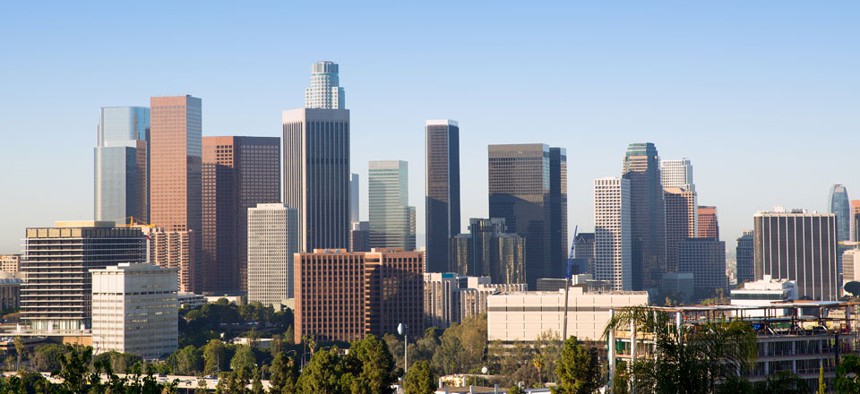Large Metros Have Generated the Lion's Share of Employment Since the Great Recession

Large metros like Los Angeles seem to have rebounded. holbox/Shutterstock.com
Are big, successful cities the new normal?
The fallout from the Great Recession continues to reset America’s economic geography .
Larger, denser metros have performed considerably better, according to a recent analysis that charts metro employment growth since the economic crash.
The study, by Josh Lehner of the Oregon Office of Economic Analysis, used county-level jobs data to compare employment growth in large metros (with over one million people), medium-sized metros (with populations of 250,000 to 1 million), small metros (those with less than 250,000 people), and non-metro areas from 2007 through 2013.
The chart below, from Lehner’s analysis, shows the trend. The lines for all four types of metros slope steeply downward with the onset of the economic crisis, from roughly 2008 through 2010. While the bright blue line (for large metros) exhibits perhaps the steepest decline, it also rebounds the most sharply, rising steadily and ultimately eclipsing the lines for the other three types of metros in early 2012. Notice the yellow line for smaller, non-metros areas, which remains the flattest of the bunch.

The second graph below, also from Lehner’s analysis, charts the performance for these four groups of metros between 1980 and a projected 2015. Over this broader period, smaller metros and non metro areas generally outperformed larger ones up until the mid-1990s. Large metros did well in the economic boom of the late 1990s through the downturn of 2001, after which they performed roughly the same as smaller and mid-sized metros. In the current period, they’ve rebounded.

Lehner suggests that the housing boom of the mid-2000s may well have been the savior for smaller and medium-sized metros, artificially boosting their performance. “The case could…be made that the housing boom was an equalizer in which small and medium sized metros outperformed due to a stronger population growth and the associated housing demand and activity that went along with it,” he writes. “This stronger growth also may have pulled some away from the larger cities at the same time.”
More recently, the pattern may have returned to more normal conditions that seem to favor large metros . “[G]ood economic things—agglomeration effects, knowledge spillovers, clustering, etc.—happen in certain locations, which are usually bigger cities,” Lehner adds.
Larger metros, it seems, are the main beneficiaries from the ongoing clustering of talent, industry and investment that are part and parcel of our increasingly spiky and unequal geography.
( Image via holbox / Shutterstock.com )





